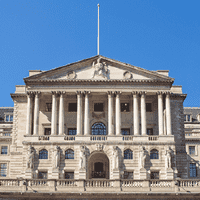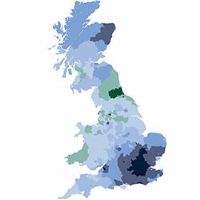For many, the first-hand experience of the once-in-a-generation events of 2007 and 2008 will be etched into their memory. For twenty-somethings – who’ll be more reliant on the 2015 film The Big Short to understand the cause and impact of subprime lending – the legacy of these events will nonetheless be all too real.
The effects of the Global Financial Crisis, which began in 2007, are still being felt a decade later, and will continue to influence the housing market in the years ahead
The first of March this year marked the 10th anniversary of my career switch to a housing market analyst. Back then, the housing market was roaring, but within six months of my arrival it had been turned on its head as prices and transactions went into reverse. Fortunately, these two things were not connected. There were much bigger forces at play, forces which continue to shape the market today.
"The Global Financial Crisis has fundamentally changed the UK housing market"
Lucian Cook, Savills Research
As we discuss in our lead article (Side effects: four ways the Global Financial Crisis continues to impact the housing market), what has since been named the Global Financial Crisis (GFC) has fundamentally changed the nature of the UK housing market. It’s made getting on the housing ladder heavily dependent on the Bank of Mum and Dad or Help to Buy, has meant homeowners trade up the housing market less often and has placed much greater demands on the private rented sector.
It has also meant that in just over 10 years, I’ve seen virtually every aspect of a housing market cycle. First, I witnessed unsustainable house price growth which preceded a rapid market correction. This was followed by a temporary bounce-back in values. Not long after came a second slip in prices as the realities of the changed availability of mortgage debt and the impact of austerity kicked in. Then came a more sustained housing market recovery that led to measures aimed at cooling parts of the market through mortgage regulation and taxation.
During the decade, there’s also been a wide variation in the performance of regional and local housing markets. For a long time, it looked as if London was dislocated from the rest of the country, but now it appears to be hitting up against the borrowing constraints imposed through mortgage regulation.
What of the future? The longer-term impacts of the GFC are likely to be masked in the short term by the effects of political (and associated economic) uncertainty. House price growth is slowing and lead indicators suggest that market activity will weaken. During the next two years, sentiment looks set to be the main determinant of the market. However, as the uncertainty gradually starts to clear, we can be sure that the fundamentals will come back into play.
The events of 2007 were the catalyst for the ultra-low interest rates which have persisted for a period few would have predicted when I was new to the joys of London commuting. When interest rates rise, we’ll see another side to the measures put in place to prevent a repeat of the GFC events. Stress-testing of mortgage affordability will take on a different dimension, acting as a more noticeable drag on UK house price growth.
You can bet that the events of the last decade will still impact the housing market in the next.


.png)
.png)